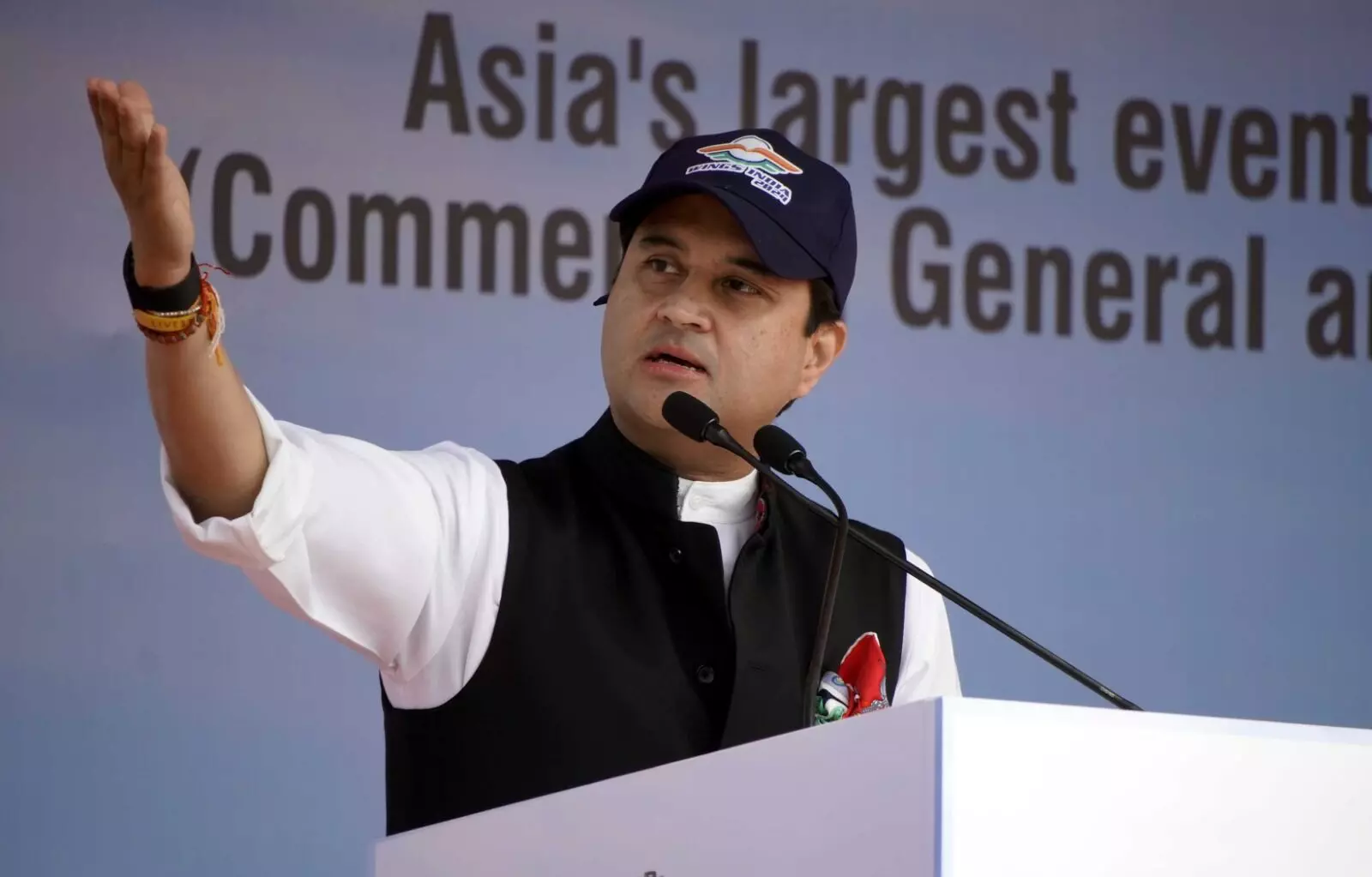Jyotiraditya Scindia: By 2032, domestic fliers to reach 635 million; 1,622 pilot licenses given in 2023
The minister said that under prime minister Narendra Modi’s flagship scheme RCS-UDAN, 76 airports in Tier-3 and Tier-4
By Sulogna Mehta
Hyderabad: “Unprecedented steps across the spectrum have been taken to create capacities, remove bottlenecks and simplify processes and procedures and ensure that in 2047, India has an aviation system that supports a US$ 20 trillion economy,” said Union minister of Civil Aviation and Steel, M Jyotiraditya Scindia.
The minister was inaugurating a four-day global aviation summit ‘Wings India 24,’ which commenced in Begumpet, Hyderabad on Thursday.
The minister said that the aviation sector is one of the key drivers of economic development and its growth in the emerging economies has been incredible. The aviation economy provides significant economic and social benefits as it facilitates tourism, trade, connectivity, generates economic growth, provides jobs, and provides a lifeline for remote communities and enables a rapid response during unprecedented situations.
“The Indian aviation sector symbolises 3As: Accessibility, Availability and Affordability,” he said.
Scaling up aviation infrastructure
Scindia spoke about ensuring state-of-the-art aviation infrastructure for Amrit Kaal.
“We are not only focusing on airplanes and airports but the development and enhancement of building a holistic airline ecosystem that has strong roots across the value chain. As part of this vision, we have doubled the number of airports in the country in the last nine years, increasing from 74 in 2014 to 149 at present. The government of India has so far accorded ‘in-principle’ approval for setting up 21 Greenfield airports across the country out of which 12 Greenfield airports have been operationalised. We are also working on capacity enhancement at our metro airports where our overall capacity is slated to rise from 221 MPPA (million passengers per annum) currently to over 468 MPPA in the next decade or so,” the minister said.
Rapid growth of domestic passengers
Talking about India’s civil aviation growth story, the minister said that the total number of domestic passengers rose from 60 million in 2014 to 143 million in 2020 growing at a CAGR (Compounded annual growth rate) of 14.5 per cent and is expected to have crossed the figure of 150 million in 2023.
“We are clocking more than 4.5 lakh passengers a day regularly with a high of 4.67 lakh domestic passengers recently. In the six years leading to FY 2020, the number of international passengers had also grown at a CAGR of 6.1 per cent. Domestic Cargo volumes handled by Indian airports in the 15 years leading to FY 2019 increased by 60 per cent while international cargo volumes increased by 53 per cent. Despite tremendous growth in recent times, India remains a highly under-penetrated market. Even if, as per projections, the number of domestic passengers reaches 635 million by FY 2030, India will still be one of the least penetrated of the 20 largest markets,” Scindia said.
UDAN connected remote parts
The minister said that under prime minister Narendra Modi’s flagship scheme RCS-UDAN, 76 airports in Tier-3 and Tier-4 and other remote corners of the country have been operationalised, thus enhancing last-mile connectivity.
“Over the past six years, UDAN has unlocked the true potential of our country by promoting tourism, boosting trade, and empowering local economies. Airstrips and airports languishing since the Second World War have been transformed under this scheme and are now giving wings to flyers in the remotest parts of the country. More than 1.32 crore people have benefited from this scheme in more than 2.5 lakh flights,” he said.
Promoting growth of helicopters and small aircraft
“We have also provided VGF (Viability Gap Funding) of almost Rs 3,100 crores, awarded 1,300 UDAN routes and operationalised 517 routes under the scheme. To ensure seamless last-mile connectivity in the country, we are also working to promote the growth of helicopters and small aircraft in India. We have conducted special UDAN rounds for small aircraft schemes, seaplane routes and helicopter routes. To enhance the safety of helicopter operations and provide all-weather day and night access, we are working to roll out a helicopter-specific low-level IFR route using GAGAN (GPS-aided GEO Augmented Navigation),” he said.
Record number of commercial pilot licenses issued
In addition to aviation Infrastructure, the government is addressing issues of capacity building across the value chain including human resources. Policies have been liberalised policies to ensure adequate availability of pilots, cabin crew, engineers, etc. in the country.
“We have substantially increased the number of FTOs (Flying Training Organisations) in the country, which shall ensure an adequate supply of trained resources for the industry. We have been issuing a record number of Commercial Pilot Licenses (CPL) in the country over the last two years with the figure crossing 1,622 CPLs in 2023, which surpassed the previous best figure of 1,165 CPLs clocked in 2022 by 40 per cent,” the minister informed.